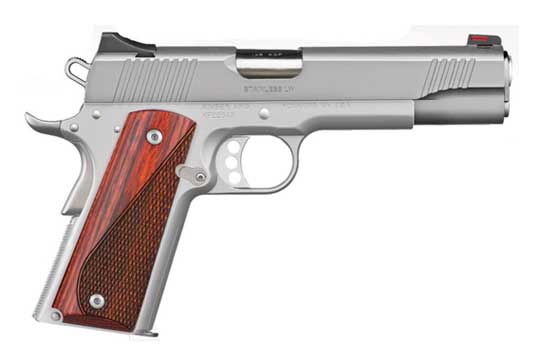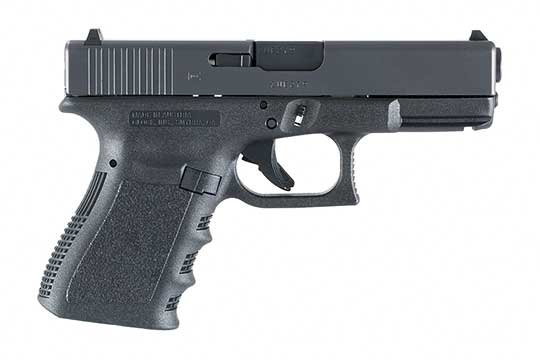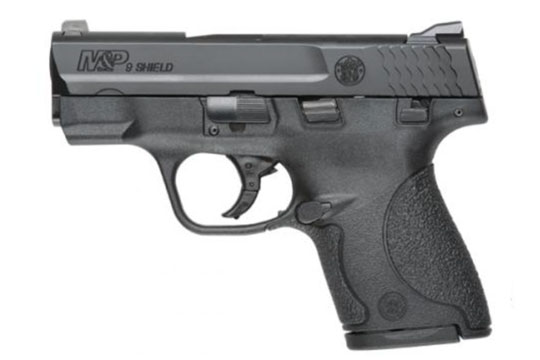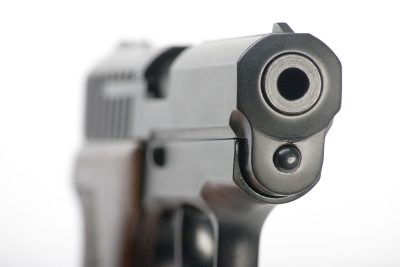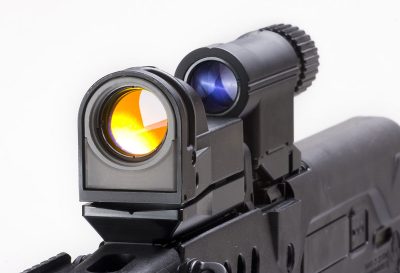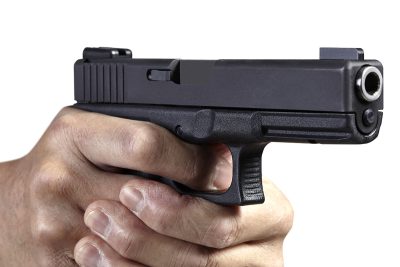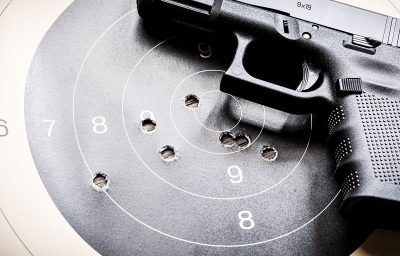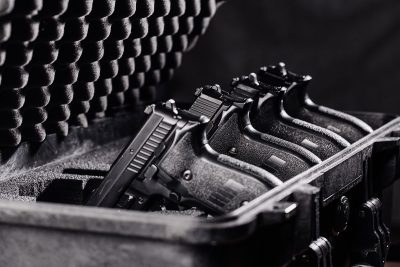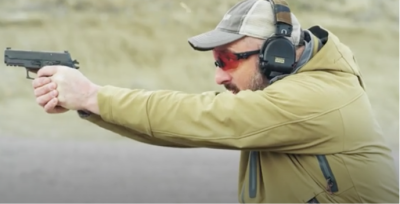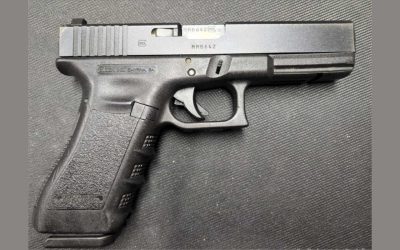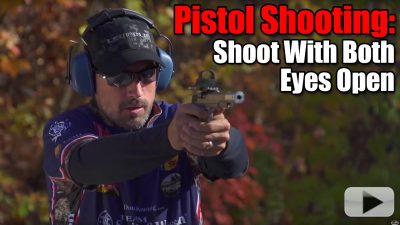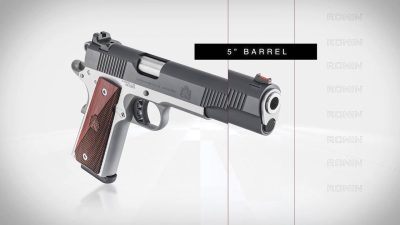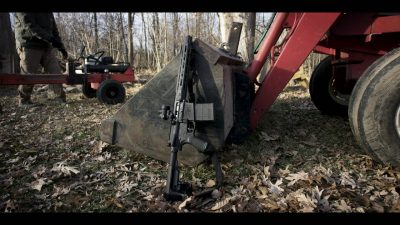Choosing Your First Handgun
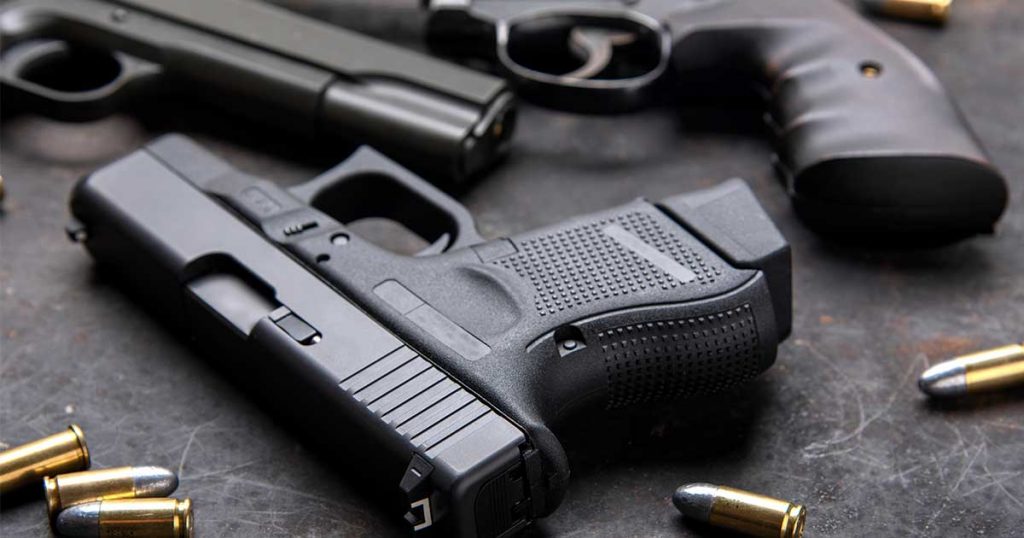
Buying a first handgun can be exciting and daunting. There is a thrill to owning a handgun, but it can also be difficult sorting through countless options. Choosing one requires exploring needs and wants; folks need to figure out the gun’s purpose and make sure it works for that purpose.
While most handguns can serve multiple purposes, some better fit the main task. Those looking for a home defense handgun, for example, might want to scratch the .22LR cowboy revolver off the list.
In that same idea, it is better to choose a handgun in a common caliber. The .38 Super may seem like a sexy option, but it might be a challenge to get ammo. In addition, the .38 Super might be a bit much for beginning shooters; it is more of a specialist caliber. Most shooters should stick with more standard calibers, such as .380 AUTO, 9mm, .40 S&W and .45 ACP. These are common calibers that serve a wide variety of uses from self-defense to competition. There are also countless ammo options for these calibers as well, from inexpensive ball style ammo to high-performance hollow points.
Single-Action, Double-Action, Striker-Fired
Next, folks need to determine the gun’s action. The action refers to how the gun loads, locks, fires and extracts the cartridge, basically how the trigger performs. While this can be a little confusing to beginners, it is not really difficult. With a single action gun, the trigger only releases the trigger; it causes the hammer to drop. This means that the hammer must be manually cocked to fire the gun. Regarding old-style cowboy revolvers, the hammer must be cocked for every shots, but with single-action semi-autos, such as the classic 1911, the hammer only has to be cocked the first time; the slide cocks the hammer with each shot.
Next up are double action guns. In DA guns, the trigger performs two actions; it both cocks and releases the hammer. Modern revolvers generally fall into this category. Because it performs two actions, double-action guns typically have a heavier trigger pull.
Closely related to DA guns are those designated as double action/single action. These are guns where the first press of the trigger is in double-action but following shots are single action. This occurs because the first press of the trigger cocks and releases the hammer, but the hammer is then reset by the cycling of the slide, making the following shots easier.
Finally up are striker-fired guns. These handguns are extremely popular in both the U.S. and abroad, mainly because of simplicity of function. Striker guns do not have an exposed hammer. Instead, when the gun fires, the slide racks back to chamber a round and partially cock an internal spring. When the trigger is pressed, it finishes cocking the gun and releases the striker pin to hit the primer and fire the round. Guns in this category include Glock, Smith & Wesson, Springfield and more.
Shopping for First Handgun
Once purpose and action have been determined, it’s time to go shopping, which can produce its own set of problems. It isn’t always fun running from gun shop to gun shop, where some clerks push guns based sales and profit, rather than the needs of customers. Another way is by shopping online.
GunBroker.com allows searching dozens, if not hundreds, of options from home. Users search for a gun, make the purchase on the site and have the gun to an FFL of choice.
GunBroker.com Product Spotlight Videos
GunBroker.com maintains a searchable list of FFL holders (Federal Firearms Licensees) who are willing to manage the legal transfer of firearms to unlicensed persons.
Almost all shops charge a “transfer” fee for receiving the gun and managing the paperwork. This is as much a courtesy fee as it is a processing fee. When a gun arrives at a shop there is specific legal documentation that must take place in the shop’s log books. This takes time, and since the shop is not actually selling the gun, and thus missing out on potential profit, most charge a fee for time and effort. Be sure to check fees before moving forward with purchases. (Transfer Dealers on GunBroker.com’s FFL Finder will list their fees.) Fees can range anywhere from $20 to as high as $75 in some cases. And, this is separate from any shipping costs.
First Handguns are Personal
There are few purchases as consequential as a handgun. It is important to take the time to research the many options and decide what is best. This is the best way to avoid buyer’s remorse. The Internet and gun magazines can be good sources of information, but folks need to read more than one piece and make a decision.
A handgun is a very personal item. Just because a friend sings the praises of a gun, doesn’t mean that gun is a good fit for everyone. Glock is a good example. While they are extremely popular with a lot of people, Glocks are not a good fit for everyone. Handguns are not a one size fits all purchase. Be patient and find a gun a suits the need.

